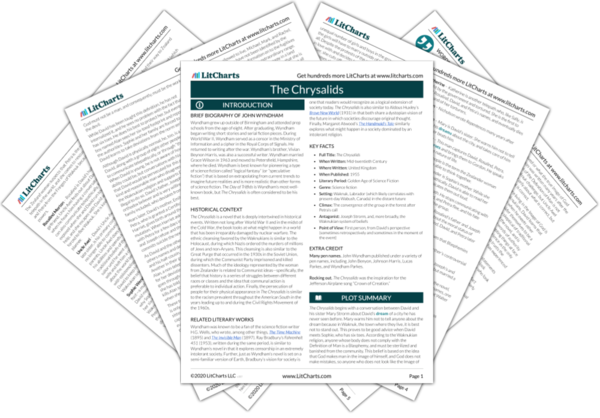Next
Summary
The Chrysalids Study Guide |
Next
Summary
|
Welcome to the LitCharts study guide on John Wyndham's The Chrysalids. Created by the original team behind SparkNotes, LitCharts are the world's best literature guides.

Many pen names. John Wyndham published under a variety of pen names, including John Benyon, Johnson Harris, Lucas Parkes, and Wyndham Parkes.
Rocking out. The Chrysalids was the inspiration for the Jefferson Airplane song “Crown of Creation.”